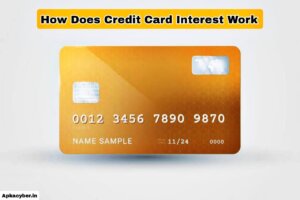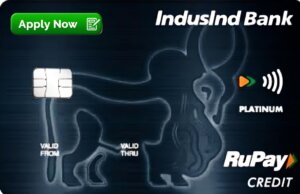
Credit card interest are widely used as a convenient payment tool, offering consumers the ability to purchase goods and services on credit. However, with this convenience comes a crucial financial element—interest. Understanding how credit card interest works is essential to managing personal finances effectively and avoiding the traps of long-term debt.
This guide explains the structure and mechanics of credit card interest, how it’s calculated, why it’s charged, how to avoid or minimize it, and what it means for your overall financial health.
1. What is Credit Card Interest?
Credit card interest is the cost you pay for borrowing money from your credit card issuer. When you use a credit card, you are essentially taking a short-term loan. If you do not pay off the balance in full by the due date, the issuer charges interest on the remaining amount.
Interest is the card issuer’s way of earning money from lending. While some users manage to pay their balances in full each month and avoid interest altogether, others carry balances over time and incur charges.
2. Annual Percentage Rate (APR)
One of the first terms you’ll encounter when dealing with credit card interest is the APR, or Annual Percentage Rate. This is the yearly rate of interest that will be applied to your balance if you carry debt from one month to the next.
Types of APRs:
-
Purchase APR: Applied to purchases made with the card.
-
Cash Advance APR: Applied when withdrawing cash using your credit card.
-
Balance Transfer APR: Applied when transferring a balance from another card.
-
Penalty APR: A higher rate that may be applied if you make late payments or violate other terms.
While APR is stated annually, interest is typically calculated on a daily basis using what’s called a Daily Periodic Rate.
3. How Interest Is Calculated
To understand how much interest you might owe, it’s important to grasp how the calculation works. Interest is usually computed using average daily balance and compounded daily.
Step-by-Step Calculation:
-
Convert APR to Daily Periodic Rate (DPR):
DPR=APR365\text{DPR} = \frac{\text{APR}}{365}
For example, if your APR is 18%, your daily rate would be:
0.18365≈0.000493 or 0.0493%\frac{0.18}{365} \approx 0.000493 \text{ or } 0.0493\%
-
Calculate Average Daily Balance:
This involves summing up your daily balances for the billing period and dividing by the number of days. -
Multiply the Average Daily Balance by the DPR and Days in the Billing Cycle:
Interest=Average Daily Balance×DPR×Number of Days\text{Interest} = \text{Average Daily Balance} \times \text{DPR} \times \text{Number of Days}
Example:
-
APR: 18%
-
Average daily balance: $1,000
-
Billing cycle: 30 days
Interest=1000×0.000493×30≈14.79\text{Interest} = 1000 \times 0.000493 \times 30 \approx 14.79
So, you’d owe about $14.79 in interest for that month.
4. The Grace Period
Credit cards often offer a grace period, which is a window of time during which you can pay off your balance without being charged interest.
How It Works:
-
The grace period typically applies only to new purchases.
-
If you pay your full statement balance by the due date, you avoid interest on those purchases.
-
If you carry any balance past the due date, you usually lose the grace period, and new purchases may start accruing interest immediately.
Understanding and using the grace period wisely can help you use a credit card without ever paying interest.
5. Compounding Interest
Credit card interest is typically compounded daily, which means the amount you owe can grow faster than you might expect.
Each day, the card issuer adds interest to your outstanding balance. The next day, they calculate interest on the new, slightly higher balance. This daily compounding means that the longer you carry a balance, the more interest you pay.
Over time, this can lead to what’s known as the debt snowball, where your debt grows rapidly if you’re only making minimum payments.
6. Minimum Payments and Interest
Every credit card statement includes a minimum payment, which is the smallest amount you must pay by the due date to keep your account in good standing.
What Happens If You Only Pay the Minimum?
-
A large portion of the payment goes toward interest, not principal.
-
It can take years to pay off a balance.
-
You end up paying significantly more than you originally borrowed.
For example, if you owe $2,000 with an APR of 18% and you make only the minimum payment of $40 per month, it could take over 6 years to pay it off—and you might pay over $1,500 in interest alone.
7. Cash Advances and Interest
Taking a cash advance using your credit card often results in higher costs than regular purchases.
Key Points About Cash Advances:
-
Higher APR: Often around 25% or more.
-
No grace period: Interest starts accruing immediately.
-
Additional fees: Often 3–5% of the amount withdrawn.
Because of these costs, financial advisors generally recommend avoiding cash advances unless absolutely necessary.
8. Promotional and Introductory APRs
Many credit cards offer introductory 0% APR promotions for new customers. These can apply to purchases, balance transfers, or both.
How They Work:
-
You may pay no interest for a set period (e.g., 12 or 18 months).
-
After the promo period, the regular APR kicks in.
-
If you don’t pay off the full balance by the end of the promo, interest is charged on the remaining amount—sometimes retroactively if it’s a deferred interest plan.
These offers can be beneficial if used strategically, but you need to read the fine print carefully.

9. Penalty APRs and Default
If you violate the terms of your credit card agreement—such as missing a payment or exceeding your credit limit—you may be hit with a penalty APR, often exceeding 29%.
This higher rate may be temporary or permanent, depending on the issuer and the situation. Penalty APRs are one of the most expensive outcomes and can drastically increase your total debt.
10. How to Avoid or Reduce Credit Card Interest
Even if you regularly use a credit card, there are several ways to avoid or reduce interest charges:
Pay in Full
-
Always aim to pay your statement balance in full by the due date. This keeps you within the grace period and avoids interest on purchases.
Use 0% APR Offers Wisely
-
Take advantage of promotional APRs to make large purchases or pay down existing debt, but make a plan to repay before the promo ends.
Make Payments Early
-
Making a payment before your due date or even multiple payments in a cycle can lower your average daily balance and thus reduce interest.
Avoid Cash Advances
-
Try not to use your credit card for cash unless absolutely necessary.
Increase Your Payments
-
Pay more than the minimum whenever possible to reduce your principal balance and shorten the time you’re in debt.
11. The Impact of Credit Card Interest on Debt
Credit card interest can significantly impact your financial health if not managed carefully. Over time, high-interest debt can lead to:
-
Difficulty saving for future goals.
-
Damaged credit scores if payments are missed.
-
Emotional stress and reduced financial freedom.
By understanding how credit card interest works, consumers can make more informed decisions and use credit responsibly.

12. Credit Scores and Interest Rates
Your credit score plays a significant role in determining what interest rates you’re offered.
Higher Credit Score = Lower APR
Lenders consider people with high credit scores (typically above 700) to be less risky, so they offer them lower APRs. Those with lower credit scores may face higher interest rates, as the lender is taking on more risk.
Keeping your credit score high can save you a substantial amount in interest over time.
13. Legislative Protections and Disclosures
Credit card interest is also subject to certain regulations, such as those outlined in the Credit CARD Act of 2009.
Key Protections Include:
-
Advance Notice: Issuers must notify you 45 days before increasing your interest rate.
-
Clear Disclosures: Statements must include how long it will take to pay off your balance making only minimum payments.
-
Limits on Penalty APRs: These can’t be applied retroactively to existing balances (in most cases).
These protections help consumers understand the cost of credit and avoid unfair practices.

Conclusion
Understanding how credit card interest works is key to maintaining financial health. While credit cards offer convenience and rewards, the interest charges can quickly add up if not managed wisely.
By paying off balances in full, avoiding unnecessary cash advances, taking advantage of grace periods, and knowing how interest is calculated, consumers can use credit cards to their advantage without falling into the debt trap.
Interest is not inherently bad—it’s simply the cost of borrowing. But like any financial tool, credit cards require education and discipline. Mastering the concept of credit card interest gives you more control over your money and ensures you’re using credit in a way that benefits—not burdens—your financial future.